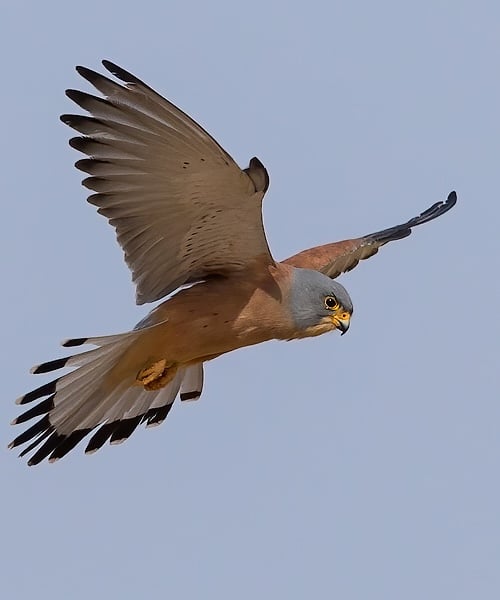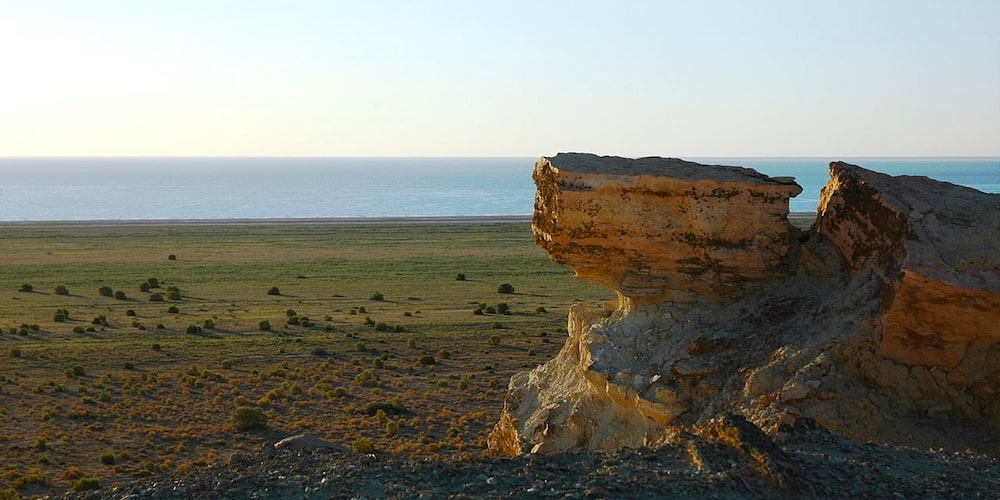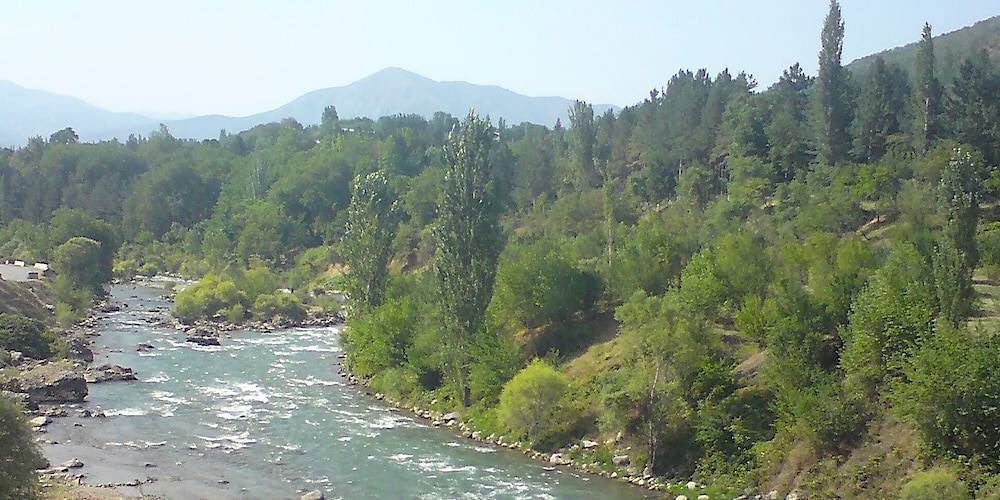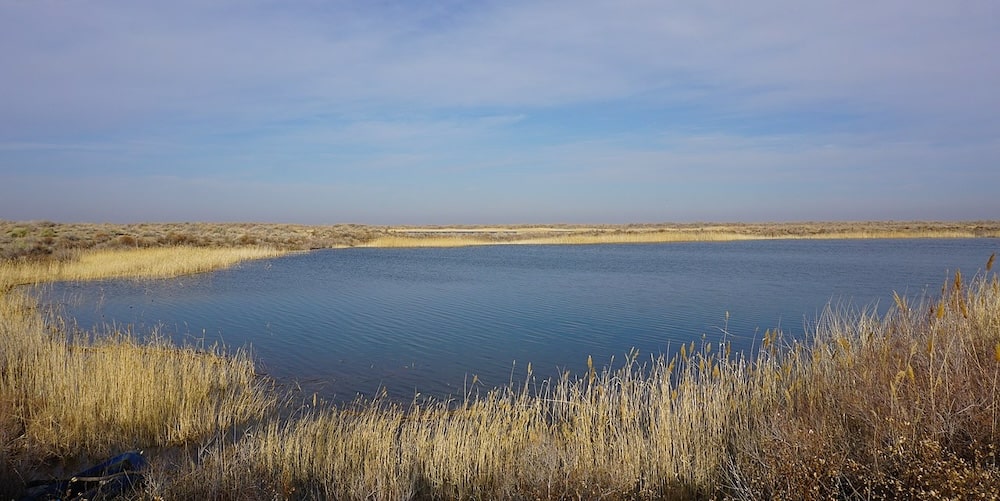Republic of Uzbekistan

Uzbekistan is a doubly landlocked country located in Central Asia. It is surrounded by Kazakhstan to the north, Kyrgyzstan to the northeast, Tajikistan to the southeast, Afghanistan to the south, and Turkmenistan to the southwest, making it one of only two doubly landlocked countries on Earth, the other being Liechtenstein. Uzbekistan is part of the Turkic world, as well as a member of the Organization of Turkic States. Uzbek, spoken by the Uzbek people, is the official language and spoken by the majority of its inhabitants, while Russian and Tajik are significant minority languages. Islam is the predominant religion, and most Uzbeks are Sunni Muslims, but it is a secular state. It has an area of 447,400 square kilometres (172,700 square miles), making it is the 56th largest country in the world by area and the 40th by population with around 37 million people. The capital, Tashkent, is by far the largest city with a population of nearly three million.
Due to its location within a series of endorheic basins, none of its rivers lead to the sea. Less than 10% of its territory is intensively cultivated irrigated land in river valleys and oases. Desert and high plateaus dominate as 60% of the country is arid, although irrigation provides the means for a massive fruit and cotton economy in the north-eastern part of the country. Cotton still is the most valuable crop, and the country is the fourth-largest cotton producer in the world. The biggest body of water in the land-locked region, was the Aral Sea, which has been largely desiccated by cotton production established in the Soviet era. This is considered one of the world’s worst environmental disasters. The rest is the vast Kyzylkum Desert and mountains. The highest point is Khazret Sultan at 15,233 feet above sea level, in the southern part of the Gissar Range in the Surxondaryo Region on the border with Tajikistan, just northwest of Dushanbe.

Aral Sea seen from Ustyurt Plateau – ©svenfischer.fr CC BY-SA 3.0 via Wikimedia Commons
For many centuries the territory of modern Uzbekistan was at the centre of the rich cultural and commercial developments that occurred in Central Asia. The Great Silk Road passed through Uzbekistan’s cities as Fergana, the capital Tashkent, Samarkand, Bukhara and Khiva. Uzbekistan is not only rich in cotton, vegetables, and grain; its economy is blessed with gold, valuable minerals, and substantial reserves of energy resources, especially oil and natural gas.
The climate is continental, with little precipitation expected annually, just four to eight inches. The average summer high temperature tends to be 40 °C, while the average winter low temperature is around −23 °C.
Birding Uzbekistan
Uzbekistan is home to six terrestrial eco-regions: Alai-Western Tian Shan steppe, Gissaro-Alai open woodlands, Badghyz and Karabil semi-desert, Central Asian northern desert, Central Asian riparian woodlands, and Central Asian southern desert.
Obviously, when you go depends on the species you most want to see. Early April and May are best for spring migrants with the chance of encountering some late-staying over-wintering birds and early nesting residents. Whereas, September and October are best for autumn migration. Outside of those times, a visit between November and February can be excellent for wintering waterbirds as well as some of the mountain specialties which descend to lower altitudes in winter.

Gissaro-Alai open woodlands beside the Ugam River – ©Carpodacus CC BY-SA 3.0 via Wikimedia Commons
Uzbekistan has nine national nature reserves, two national parks, five natural monuments, thirteen wildlife preserves and other natural sites, covering unique landscapes from Barkhan Sands to flowering oases, and from riverine woodlands to alpine meadows.
Given that the country is situated at the intersection of key migratory flyways from Western Siberia and Kazakhstan to Iranian-Caspian and Indian-Pakistani wintering grounds and that it is a migration corridor on the Central Asian Flyway many passage species can be seen. Desert, mountain, wetland and riparian forest ecosystems are essential for millions of migratory, breeding and wintering bird species, many of which are global¬ly threatened.
Given this variety of habitats, Uzbekistan is well placed for birders to see a number of regional specialties. The Kyzylkum Desert and Ustyurt Plateau are important for breed¬ing Saker Falcons, Egyptian Vultures and Lesser Kestrels while mountain ranges are breeding sites for a range of birds of prey including Cinereous and Griffon Vultures, Lammergeiers, Saker Falcons and Golden Eagles. Other notable species include Himalayan Snowcock, Hume’s Short-toed Lark, Indian Paradise-flycatcher, White-winged Snowfinch and Red-mantled Rosefinch. The deserts and semi-arid areas are important for Macqueen’s Bustard, Pallas’s Sandgrouse, Egyptian Nightjar and Desert Lark while Asian Short-toed Lark, Pander’s Ground-jay and Saxaul Sparrow can also be found.
Sizeable concentrations of waterbirds are found in Uzbekistan’s many large wetland areas which host a number of globally-threatened species such as Marbled, Ferruginous and White-headed Ducks, Common and Demoiselle Cranes and Dalmatian Pelican. Tugay or riparian forests are important as breeding areas for Shikra, seven local subspecies of Com¬mon Pheasant, Pallid Scops Owl, White-winged Woodpecker and Turkestan Tit.

Beruniy Wetlands – ©karb CC BY-SA 3.0 via Wikimedia Commons
Sought-after birds include three species of sandgrouse, Lesser White-fronted Goose, Marbled Duck, Ferruginous Duck, White-headed Duck, Dalmatian Pelican, Sociable Lapwing, Lesser Kestrel, Saker Falcon, Pander’s Ground Jay and Turkestan Tit.
-
Number of bird species: 483
(As at January 2025)National Bird: Huma Bird - This is a mythical creature that in Uzbek mythology, the symbol of happiness and freedom.
-
Avibase
PDF ChecklistThis checklist includes all bird species found in Uzbekistan , based on the best information available at this time. It is based on a wide variety of sources that I collated over many years. I am pleased to offer these checklists as a service to birdwatchers. If you find any error, please do not hesitate to report them. -
Birding Day
Annotated ListThe Checklist of the Birds of Uzbekistan -
Wikipedia
Annotated ListThis is a list of the bird species recorded in Uzbekistan. The avifauna of Uzbekistan include a total of 483 species. -
eBird
PDF ChecklistThis checklist is generated with data from eBird (ebird.org), a global database of bird sightings from birders like you. If you enjoy this checklist, please consider contributing your sightings to eBird. It is 100% free to take part, and your observations will help support birders, researchers, and conservationists worldwide.
-
Birds of Central Asia
| (Kazakhstan, Turkmenistan, Uzbekistan, Kyrgyzstan, Tajikistan & Afghanistan) | By Raffael Ayé, Manuel Schweizer & Tobias Roth | Christopher Helm | 2012 | Paperback | 336 pages, 141 plates with colour illustrations; 14 colour photos, 5 b/w illustrations, 3 colour maps, colour distribution maps | ISBN: 9780713670387 Buy this book from NHBS.com -
Birds of Uzbekistan: Photoalbum
| By Boris Nedosekov & Roman Kashkarov | Silk Road Media | 2012 | Hardback | 100 pages, 200 colour photos | Text English & Russian | ISBN: 9780955754913 Buy this book from NHBS.com -
Important Bird Areas in Uzbekistan
| Priority Sites for Conservation | Edited by RD Kashkarov, GR Welch and M Brombacher | RSPB | @008 | Paperback | 188 pages, Maps, tabs, figs | ISBN: Buy this book from NHBS.com
-
Institute of Zoology of Uzbek Academy of Sciences
WebpageThe ornithological collection is housed in the building of the Institute of Zoology of Uzbek Academy of Sciences at the address: 100095 Tashkent, A. Niyazov street, 1. The collection occupies depository room 19 on the second floor. In 2005, Aleksandr Konstantinovich Filatov became the keeper of the collection.
-
Uzbekistan Society for the Protection of Birds
WebsiteThe goals of the UzSPB are the following: conservation and rehabilitation of the gene pool of birds permanently and temporarily inhabiting the territory of Uzbekistan; meeting cultural, education, spiritual and other non-material demands related to aesthetic, cultural and cognitive value of birds. -
Uzbekistan Student Birdwatching Clubs
WebpageIn 2007 IBA program in Uzbekistan started development of student birdwatching clubs in different regions of Uzbekistan. At the moment in Uzbekistan following active clubs exists:
-
NP Ugam
InformationSatellite ViewUgam-Chatkal National Park is a national park in northeastern Uzbekistan, along the border with Kazakhstan. Established in 1992 and covering 668,350 ha (1,651,500 acres), the park is located in mountainous areas of the Bostonliq, Parkent and Ohangaron districts of Tashkent Region. -
NP Zaamin
InformationSatellite ViewIt was created in 1926 as the Guralash Nature Preserve, and is located on the northern side of the Turkestan Range. The Zaamin National Park is frequently referred to as the Switzerland of Uzbekistan because of its lush surroundings and beauty. -
Protected Areas of Uzbekistan
InformationSatellite ViewInteractive links to National Parks (2), RAMSAR sites (2) and Nature Reserves (9) -
SNR Amu Darya
InformationSatellite ViewJust over the border in Turkmenistan -
WII IBA Dengizkul Lake
InformationSatellite ViewDengizkul lake is situated 75 km south-south west from Buhara town near the border with Turkmenistan. It is surrounded by mainly sandy desert with large sand dunes and bushes of saxaul and acacia – the northern part of the Sundukli sands. Hilly sands are most typical for the boundary region with Turkmenistan. The lake is situated in a natural low-lying landscape. The water is strongly salty and supplied by a collector-drainage channel. In former times it was the final reservoir of the Zarafshan river. The IBA consists of the open water area and coastal strip 500 metres wide. Important wintering species are Pelecanus crispus, Marmaronetta angustirostris, Aythya nyroca and Oxyura leucocephala.
-
eBird
SightingseBirding This Month
-
AnurTour
Local Tour OperatorBirdwatching tour in Uzbekistan -
Asia Adventures
Tour OperatorThe nature of Uzbekistan is rich and various. About 379 kinds of birds live here: you can observe birds in sunny deserts and attractive oasis, valleys of the fast mountainous rivers and of the banks of pure lakes, steppes and magnificent mountains. This journey is ideal for birdwatching and exploring of historical sites of the most ancient cities in Central Asia - Samarcand, Bukhara. -
Bird-Photo-Tours ASIA
Tour OperatorUzbekistan is located in Central Asia, bordered by Kazakhstan, Turkmenistan, Afghanistan and Iran and is a country with diverse habitats from deserts, mountains, steppes and oases with over 500 species of birds, making it a popular destination for the bird photographer. -
BirdFinders
Tour OperatorUzbekistan offers a number of central Asian specialities. Top amongst these are Turkestan Ground-jays, which are relatively easy to find. Other range-restricted species include Hume’s Lark, Variable Wheatear and Azure (Yellow-breasted) and Black-breasted Tits along with numerous larks, warblers and other passerines. There will be short tours to appreciate the history of Uzbekistan’s ancient cities, Bukhara and Samarkand, both of which are in excess of 2500 years old! -
BirdQuest
Tour OperatorCENTRAL ASIA – Magical spring birding in Kazakhstan, Uzbekistan and Turkmenistan -
Birding Day
Local Tour OperatorOne-day birding tours Uzbekistan is the main tourist country of Central Asian in Great Silk Road. -
Calidris Birding
Tour Operator21st May – 4th June: Central Asia Birding Tou -
HeatherLea
Tour OperatorThis new and unique Heatherlea holiday will explore the rich splendour of Uzbekistan and the rugged beauty of Kyrgyzstan... -
NatureTrek
Tour OperatorTour Code: UZB01A 10-day tour of Uzbekistan, combining birdwatching with the country’s unique history and culture. -
Rubythroat Birding Tours
Tour OperatorBirding the Silk Road Uzbekistan birding and culture This pre-tour is designed to bird the remarkable country of Uzbekistan at a brisk pace, yet with ample time to take in its stunning sights and birdlife. -
Silk Road Birding
Local Tour OperatorSilk Road Birding focuses on organising ornithological and cultural tours in Central Asia: Kazakhstan, Kyrgyzstan and Uzbekistan. -
Tropical Birding Tours
Tour OperatorThere is a pre-tour extension to Uzbekistan. A country steeped in ancient history, that was replete with splendid cities and cultures based along the Great Silk Route to China – a true crossroads between east and west. We will visit fabled historical sites in Tashkent, Samarkand and Bukhara, viewing incredibly beautiful, extravagant ancient architecture. -
WINGS
Tour OperatorThe Silk Road, Samarkand, and Bukhara—the names conjure up images of fierce Mongol hordes storming out of the east and of dusty camel trains and crowded bazaars where rare jewels and exotic spices were traded by travelers from far-off lands.
-
2019 [06 June] - Rockjumper - Kazakhstan & Uzbekistan
PDF ReportThis was the first Rockjumper tour to Uzbekistan and Kazakhstan. The tour covered varied biogeographical zones and the bird specialities across these two land-locked countries. From the deserts of Kyzylkum in Uzbekistan and Taukum in Kazakhstan, through steppes and wetlands to mountains of anti-Pamir in Uzbekistan and Tien Shan in Kazakhstan, the tour connected with some of Central Asia's most sought-after species, enjoyed fantastic scenery and tasted from the rich cultures and histories of the region. -
2021 [05 May] - Martin Grienenberger - Nurota Mountains
PDF ReportThe Nurota Mountains (Uzbek: Nurota tog'lari, Russian: Нурата́у or Нурати́нский хребе́т) is a mountain range located in Uzbekistan and constitutes one of the western buttresses of the Gissar Range. It borders Aydarkul Lake to the north, the town of Nurota to the west, the Kyzylkum Desert to the south, and the Sanzar river to the east. Stretching over 170 km in east–west direction it culminates in the 2169 m Mount Zargar. The range is composed chiefly of sandstone and limestone. It has a flat crest, a steep and rocky northern slope, and a gentle southern slope... -
2021 [06 June] - Martin Grienenberger - Zaamin National Park
PDF ReportZaamin National Park is a place of majestic snow topped mountains, dense juniper forests, the purest air filled with the smell of mountain herbs and beautiful flowers. It is situated on the northern slope of the western part of Pamir-Alai Turkestan ridge In Uzbekistan they call it “A paradise of Uzbekistan” or the “Uzbek Switzerland” due to its pure beautiful nature. There is a small entrance fee (12 250 sum) to enter the park... -
2023 [05 May] - Mark Beaman
PDF ReportBirding in Central Asia in May is utter magic for anyone who enjoys Palearctic birding at its best. So many birds around (like Western Europe must have been like in the 1800s!), beautiful breeding plumages, migration everywhere (especially obvious in the deserts), wonderful specialities, myriads of wildflowers, a lovely climate (no hot, humid conditions here!), very easy birding (no dense forest) apart from the early starts, mostly good roads, hugely improved accommodations and food, truly extraordinary scenery, and of course the fabulous monuments of the famous Silk Road cities. One of the most enjoyable birding tours you could ever do! -
2023 [05 May] - Nick Whitehouse
PDF ReportFrom the natural history point of view, Uzbekistan, like Kazakhstan to the north, forms a bridge between Asia and Europe and enjoys an astonishingly rich biodiversity, including an amazing bird list. -
2023 [08 August] - Mark Easterbrook
PDF Report...A more focussed birding trip, visiting locations off the beaten track and into the Kyzylkum Desert would no doubt yield more species and specialities. I extended my time in Tashkent with the aim of journeying to the Chimgan Mountains for a day’s birding... -
2024 [05 May] - Nick Upton
ReportDespite the fact that this was an exploratory Uzbekistan birding tour, coupled with sight-seeing in some of this amazing county’s historical cities, the list of high quality species outlined in this birding trip report demonstrates what an exciting addition Uzbekistan makes to Central Asian birding tours.
-
Uzbekistan Hotels
AccommodationAccommodations in Uzbekistan can be divided into four categories. At the top of the heap are new hotels, typically built with foreign capital from places like India and Malaysia.


